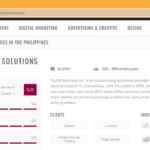Attitude is one of the most commonly used and yet most misunderstood words in the English language. Managers tell salespeople their attitude controls their sales. Therapists tell couples to change their attitude, and their relationships will improve. Doctors tell patients we’ve done all we can; now it’s up to you. All things being equal, the person with the best attitude will win. Other things not being equal, the person with the best attitude usually wins. You would think that anything that packs this much power would be a subject that is taught from a young age. And yet, if you asked the next ten people you meet what attitude means, you would probably get ten different answers. However, when you have a good, clear understanding of what attitude is and how attitudes are formed, it will become apparent very quickly that only a small percentage of the population is in control of their attitude. So, if you’re like most people, you have not taken control of your attitude. But if you’re not controlling it, who or what is? If not you, then who? The media, other people, and the conditions and circumstances of their life control most people’s attitudes. Of course, that’s not good since attitude has such a tremendous effect on the quality of our lives. So, let’s talk about what attitude is and how you can use this information to shift any aspect of your life. What Is Attitude? Your attitude is the composite of your thoughts, feelings, and actions: Thoughts: Your conscious mind can accept, reject, or ignore ANY idea that flows into your consciousness. Any idea that your conscious mind accepts and internalizes (consciously or unconsciously assimilates) has an effect on your physical body, as explained below. Feelings: The nature of the idea that you internalize is impressed on your subconscious mind and determines the vibration of your body. Another word for vibration is the feeling that you express. If the idea is negative, you will express negative emotions. However, if it is positive, your emotions or vibrations will be positive. Actions: The body, which is the instrument of the mind, is the only medium through which the conscious and subconscious minds working together are able to express themselves. Whatever idea is impressed upon the subconscious mind MUST be expressed through the vibration of the molecules in the body. When that vibration becomes strong, the body must move into actions that attract people and circumstances that are vibrating at the same frequency. The Environment is But Your Looking Glass Your environment can only return to you what is corresponding to what you’re sending out. And what you’re sending out is your attitude (the composite of your thoughts, feelings, and actions). The environment acts as a mirror and sends that energy right back. If you see a reflection from your environment that you don’t like, it’s your opportunity to make a new decision and to shift your attitude. If you’re not sure what your attitude is, look at your results. Attitude and results follow one another like night follows day. What I mean by that is: one is the cause, the other is the effect. If you think in negative terms (cause), you will get negative results (effect); if you think in positive terms, you will achieve positive results. Ralph Waldo Emerson reiterated that same point when he said: “A person is what they think about all day long.” The results you achieve in life are nothing more than an expression of your thoughts, feelings, and actions. If you don’t like the results you’re getting in life, change what you are sending out. Your attitude is something you have control over ALL the time. When Your Attitude Shifts, Everything In Your world Shifts As you can see, your attitude is determined by the nature of the ideas that you choose and permit yourself to internalize (or, as we often say, what you get emotionally involved with). Then, the physical expression is automatic. It doesn’t matter if the choice is conscious or unconscious. Now, you can say, “I didn’t know,” but that’s too bad; you lose. In life, there is no allowance for ignorance. It is what it is. You can’t fake it. If you are faking a smile, enthusiasm, or friendliness, people will see through your insincerity quicker than you can imagine. To get your desired results, your thoughts and feelings, or your conscious and subconscious mind, must be in harmony and that harmony will be expressed in your actions. You will be calm, focused, and genuine. So I hope you clearly understand why you should never blame another person, or conditions or circumstances for any challenge you have in life… If you are having a problem, your conscious choice is where the problem originates. The most important investment you can make in your future happiness, success, and genius is to take time each morning to set your mindset for the day. Read something encouraging and motivational, practice gratitude, meditate or visualize, read your goal card, practice autosuggestion. Create the routine that is just right for you to ensure that you start with a positive outlook and a plan to choose thoughts and ideas that send out a message that is congruent with what you want to be returned to you. Have A Super Day!
Postpandemic Outsourcing Trends for CEOs
The COVID-19 pandemic has changed many priorities and created a new reality in its wake, but it hasn’t altered the need to deploy smart outsourcing strategies. If anything, the past 12 months have underscored how critical it is for companies to effectively manage IT, service providers—those that offer digital capabilities and business process services—in order to survive a crisis and, at the same time, transform to lead in the aftermath. Moreover, the crisis has reinforced companies’ symbiotic relationships with their service providers. That’s evident from a survey that BCG conducted in the last quarter of 2020. We found that companies will continue to depend on service providers even though they will also invest more in developing in-house capabilities. The results also reflect the state of companies’ digital transformations. Contrary to the popular notion that businesses sustained all their digital transformation projects last year, the survey shows that many companies were selective about which ones they pursued. And while 76% of respondents expect to slow down some transformation initiatives during the next 24 months, 96% expect to accelerate the execution of some transformation projects. In this article, we shine a light on these findings and their implications for the future. COUNTING ON SERVICE PROVIDERS TO NAVIGATE THE CRISIS All through 2020, as the pandemic raged and governments around the world were forced to impose, and then reimpose national lockdowns, the world’s economies were paralyzed. To understand the impact of the COVID-19 crisis on outsourcing, BCG conducted a survey of 200 global companies with large IT and business-process outsourcing footprints. (See “About the Survey.”) We found that 82% of the respondents saw revenues fall, 78% faced operational challenges, and 68% had to cope with service provider-related challenges. Many companies realized that they had no option but to become more digital more quickly if they were to survive, but only those that could facilitate remote work on short notice were able to limit the impact of the pandemic on their operations. In addition to ensuring that employees working from home could operate critical business processes, such as order to cash, adroit companies shifted to online marketing, selling, and service delivery for the foreseeable future. Finding it difficult to manage these forced digital transitions on the fly, many companies turned to their service providers for support then and have been expanding their relationships with them. “We are deepening our relationships with the [service providers] that saw us through [the initial crisis],” said a CIO of a global mining company. “They’ve been supportive and particularly good. We haven’t had a major incident throughout this period.” Many companies that turned to their service providers for support are expanding their relationships with them. Many companies were forced to take unprecedented steps to survive: 79% said that they asked service providers for help in some form, such as longer payment terms (47%), price reductions (45%), or free support for more processes or additional services (41%). The CIO of a large Australian bank stated, “We talked to our service providers, telling them frankly: ‘We’re sorry, we can’t keep paying for this process.’ [But] that was only for short-term relief.” Some companies were able to cope with the crisis because of the portfolio sourcing strategies that they had adopted before the pandemic. (See Exhibit 1.) They had been distributing the services they need to offshore and onshore providers, as well as investing in building in-house capabilities. In fact, 67% focused on developing in-house capabilities, and 66% concentrated on increasing insourcing levels. These companies tasted relatively more success during the crisis than other respondents. While many companies rely on a global footprint of service providers to prevent service breakdowns, that model doesn’t factor in the possibility of a pandemic washing over the world. Service providers, particularly in outsourcing hubs such as India and the Philippines, were hit hard, although they did their best to cope. For example, a service provider in India rented an entire hotel to ensure that its employees could work in a bubble. The company provided accommodations, access to food 24-7, stable broadband connections, and, later, regular COVID-19 testing. Other service providers negotiated with local governments to ensure that power cuts to their employees’ homes-turned-offices would be limited or, at least, predictable. PUSHING AHEAD, CAUTIOUSLY, WITH A TRANSFORMATION Businesses didn’t allow the urgent to drive out the important, though. Sixty-one percent of the companies we surveyed said that they accelerated parts of their digital transformation over the course of the year, although 42% noted that they slowed down some projects. (See Exhibit 2.) Thus, the popular perception that digital transformation has only accelerated in 2020 may be misleading, with some qualifications becoming necessary to understand the ground realities. Importantly, most enterprises plan to persist with their digital transformation agenda; in fact, 96% of the companies we surveyed expect to accelerate the execution of their transformation-related projects over the next 24 months. These companies anticipate their immediate focus to be reinforcing the IT function, with more investments in cybersecurity (55%), given that people will continue to work from home; automation (49%); cloud migration to reduce costs (47%); artificial intelligence (AI), machine learning (ML), and analytics (46%); and crowdsourced innovation (35%). That focus is consistent with their pre-pandemic agendas: 80% had been concentrating on cybersecurity, 76% had been prioritizing moving to the cloud, and 72% had been focusing on deploying AI, ML, and analytics well before the crisis. However, other companies will be selective about the digital transformation projects in which they will invest in the near term. Of the 76% of companies that expect to slow some of their transformation projects, 25% are likely to reduce their investments mainly in risk management, 23% in supply chain management, and 22% in HR processes. The main reasons that these companies offered for reducing these investments in the short run were either the lack of financial resources or a reprioritization of strategic objectives (74% of respondents in both cases). As a global fashion retailer succinctly put it: “We pushed ahead with
Philippines Launched Its Covid Vaccination Program
This Monday, March 1st, the Philippines administered its COVID-19 vaccination dose and general rollout – just over one year after the first reported COVID-19 case in the country. The country launched the vaccination drive with 600,000 doses of donated Chinese CoronaVac. Health Secretary Francisco Duque III also announced that 525,600 AstraZeneca vaccine doses earlier scheduled will be delayed for “about a week,” owing to a “global supply problem.” While the vaccination launch seems like a step towards the new normal, Metro Manila will remain under the General Community Quarantine (GCQ) for the whole month of March. The decision was made despite calls from various agencies to switch to the more lax Modified General Community Quarantine (MGCQ) lockdown restriction. However, the move was supported by the World Health Organization (WHO) – with the WHO country representative Rabindra Abeyasinghe, saying that switching to MGCQ could cause an upsurge in COVID-19 cases. credits: outsource accelerator
Back Office Outsourcing Can Work Well for Manufacturing Businesses
Manufacturing is an industry that is constantly looking for ways to operate leaner and more efficiently. From production to shipping, from supply chain management to employee attraction and retention, manufacturers are always in motion and required to meet often-tight deadlines on an ongoing basis. So finding ways to save money while doing this becomes critical. One way in which some manufacturers have found success in this area and others certainly could as well, is through business practice outsourcing (BPO) in certain areas, or simply externalizing certain company functions. While this model is likely not the solution for manufacturers for their core operations such as the production floor or research and development, it absolutely can work with back-office functions, such as payroll, human resources, and accounting. By repositioning these areas with BPO, the day-to-day operations of the manufacturing company can be better managed. Outsourcing these types of financial or HR services can actually go a long way toward helping manufacturers focus on their goals, bring more efficiencies to the overall operation, and reduce overhead costs. BPO can alleviate workload and time-consuming tasks for various departments that eat into the company’s bottom line. By employing BPO in tasks such as bookkeeping, tax return processing, auditing, and year-end financial reporting, it’s one more burden taken off of the manufacturer and allows for better concentration on what the business does best—developing, producing, and shipping products to its customers. Manufacturers best poised to take advantage of BPO are those either in the start-up phase of operation or those who function as suppliers for larger companies. In the case of the former, with a fledgling manufacturing business, why devote resources at the outset to creating internal finance and HR departments, when they can be better used to getting the operation off the ground. With suppliers, many of whom are small machine or production shops, it’s a similar benefit—the expense of outsourcing these departments can be far less than creating them in-house. The bottom line in both is efficiency—a startup or supplier likely has a great idea or a great product to offer, and that is where their expertise lies and their energy should be. And that remains perhaps the most essential benefit of bringing BPO into a manufacturing business—keeping the focus on the businesses’ core competencies and doing what it does best. BPO helps to keep strategic priorities front and center while leaving the back office tasks to professionals who do that for a living—it will both save money and bring peace of mind that the operation is sound. The alternative is nowhere near as attractive—a manufacturing business that overextends itself into areas less known to it has a much greater chance of losing core focus and damaging both productivity and customer relations. No one wants that to happen, which is why BPO services make sense for manufacturing companies. In a time of increased competition and a global market where margins are often razor-thin, manufacturers are looking for every way possible to save money and invest in their company right away. Exploring BPO for back-office operations is one proven way to keep things moving in the right direction. Tru29 has a robust understanding of the changing face of back-office services. Through a partnership with us, you can be assured that you will be adding value to your business today while taking the first steps towards ensuring preparedness for tomorrow.























